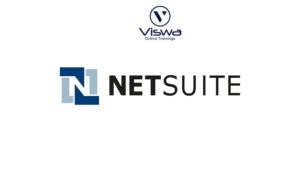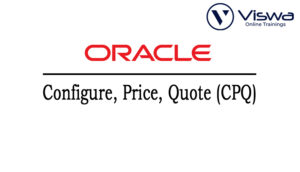Tableau Certification Training
One of the top providers of online IT training worldwide is VISWA Online Trainings. To assist beginners and working professionals in achieving their career objectives and taking advantage of our best services, We provide a wide range of courses and online training.
Learners : 1080
Duration : 25 Days
About Course
Business intelligence (BI) and analytics software like Tableau are extensively used and trusted by organizations to securely communicate data in the form of workbooks and dashboards. Everyone can easily clean, analyze, and visualize the data your team has created using the tool’s user-friendly drag-and-drop capabilities. You’ll learn how to use Tableau’s user interface, link data sources, and show data using simple visualizations. You’ll have the knowledge and abilities necessary to successfully explore Tableau and create useful data dashboards by the end of this session. Let’s start now.
Tableau Training Course Syllabus
✔ Data Warehousing Concepts
✔ What is Business Intelligence and Visual Intelligence?
✔ Different BI tools available in market
✔ Gartner Magic Quadrant for BI
✔ Basics
✔ What is Reader
✔ What is Online
✔ What is Public?
✔ Tableau Extensions
✔ Types of Extensions
✔ When to use Extensions
✔ Differences between. Twb and.Twbx extensions
✔ What is Tableau Dashboard, When to use Dashboard, and what Ways to use Dashboard?
✔ What is work book and When to use a Workbook
✔ What is worksheet and When to use worksheets
✔ What are stories & their usage
✔ Ways to use Workbook, Dashboard, Worksheet, Stories
✔ Components
✔ Types of Data Connections
✔ Connect to Live Data connection
✔ Connect to Extract Data connection
✔ Creation of Extract file
✔ Connecting to various sources using tableau
✔ Customized Queries
✔ Dynamic Queries to pull data
✔ What is Join
✔ Types of Joins
✔ When to use Joining
✔ Rules to perform the Joins in tableau.
✔ Data Blending
✔ Join vs. Data Blending
✔ Line Graphs
✔ Single Line graphs
✔ Dual Line Graphs
✔ Blended Axis
✔ Difference between Dual axis and Blended axis
✔ Horizontal Bar Charts
✔ Vertical Bar charts
✔ Side-Side by bar charts
✔ Stacked Bar charts
✔ Pie Charts
✔ Gantt Charts
✔ Box and whisker plots, etc.
✔ What is Tree Maps
✔ Heat Maps
✔ Treemap implementation
✔ Filed Maps
✔ What is Geo-Coding and implementation
✔ Importing External Custom Geocoding
✔ Symbol Maps
✔ Web Map services in Tableau
✔ Background Maps
✔ Map layers
✔ What are Filters
✔ Filters on Dimensions
✔ What is Wild Card
✔ Filters on Measures
✔ Context Filters
✔ Global Filters
✔ Quick Filters
✔ Defining Filters at Source
✔ Defining Filters at Custom SQL
✔ What is Parameter
✔ Creating Parameter
✔ Exploring Parameter Controls
✔ Work with the parameter
✔ Click interaction working with parameter
✔ Parameters and use with real-time examples
✔ Dynamically Show and Hide Sheets with Parameter
✔ What is Group
✔ When to use Group
✔ Editing Existing Group
✔ Limitation of groups
✔ What is Set
✔ When to Use Sets
✔ Types of Sets
✔ What is Tableau Calculation and when to use calculations
✔ Number Calculations
✔ String Calculations
✔ Date Calculations
✔ Type conversion
✔ Logical Calculations
✔ Aggregate Calculations
✔ User Calculations
✔ Table(Quick) Calculations,
✔ LOD Expressions – Fixed, Include, Exclude
✔ What is Trend Analysis
✔ Logarithmic Model
✔ Exponential Model
✔ Linear Model
✔ Polynomial Model
✔ What is Fore Casting and implementation
✔ What are Reference Line and types
✔ What are Actions & When to use Actions
✔ Types of Actions
✔ How to Trigger the Action
✔ What is a Hierarchy?
✔ Relation between Drill downs, Roll ups, and Hierarchies.
✔ What are Automatic Hierarchies?
✔ How to create Custom Hierarchy
✔ Removing Hierarchy
| Live Instructor Based Training With Software |
| Lifetime access and 24×7 support |
| Certification Oriented content |
| Hands-On complete Real-time training |
| Get a certificate on course completion |
| Flexible Schedules |
| Live Recorded Videos Access |
| Study Material Provided |
Tableau Training - Upcoming Batches
7th NOV 2022
8 AM IST
Coming Soon
AM IST
5th NOV 2022
8 AM IST
Coming Soon
AM IST
Don't find suitable time ?
CHOOSE YOUR OWN COMFORTABLE LEARNING EXPERIENCE
Live Virtual Training
-
Schedule your sessions at your comfortable timings.
-
Instructor-led training, Real-time projects
-
Certification Guidance.
Self-Paced Learning
-
Complete set of live-online training sessions recorded videos.
-
Learn technology at your own pace.
-
Get access for lifetime.
Corporate Training
-
Learn As A Full Day Schedule With Discussions, Exercises,
-
Practical Use Cases
-
Design Your Own Syllabus Based
Tableau Training FAQ'S
Tableau is a business intelligence software that allows interactive visualization and handling of large amounts of data. It is used by businesses around the world to crunch numbers and use insights for growth and development.
Tableau is one of the most important tools for data analytics and visualization only competed by Apache Superset, Qlik and Metabase to name a few alternatives.
There are 7 data types in Tableau:
- Boolean (True/False)
- Date (Individual Value)
- Date and Time
- Geography
- Text or String
- Decimal Number
- Whole Number
Measures and Dimensions are attributes that define a specific dataset in Tableau.
Measures are measurable quantities of data that are analyzed against dimensions. Any number of measures can be added to a single string, which is governed by dimensions. For example, an inventory of an online shop can have a total number of items, their prices, number of items sold historically, payment mode, etc. All of these can be considered measures.
On the other hand, dimensions are basically descriptions which allow visualization to take place. They allow a user to describe a single metric in different ways. A dimension table consists of all these descriptions.
There are two functions of a data server in Tableau. One, it allows continuous syncing of all data – from datasets to past calculations, aliases to definitions – on the server which can then be accessed from anywhere. This allows for a more wholesome approach during any given task. Thus, it provides security and fast access.
Secondly, having a data server means one does not have to download all the required data to a local machine to run a visualization or a report. It can be pulled easily off the internet through the server.
Get ahead in your career by learning Tableau through VISWA Online Trainings
There are mainly three filters in Tableau which are used to restrict data pull. They are:
- Normal Filter – it is used to restrict a string of data from the base on selected measure or dimension
- Quick – it is used to change values dynamically across worksheets in a dashboard
- Context – it creates a temporary data source for use in any worksheet without disturbing the main dataset
Reviews
 Vishnu Gadipudi2023-08-20I Enrolled in VISWA Online Trainings for IBM Integration BUS course . Recently I Completed IBM Integration BUS Batch. It was Really Awesome Experience. Best Place To Learn , Experienced Trainer, Gives Us High Level Knowledge....
Vishnu Gadipudi2023-08-20I Enrolled in VISWA Online Trainings for IBM Integration BUS course . Recently I Completed IBM Integration BUS Batch. It was Really Awesome Experience. Best Place To Learn , Experienced Trainer, Gives Us High Level Knowledge.... Navya Biradavolu2023-08-20I was enrolled for looker Bl Tool,it was amazing experience . especially soft skill batch is one of my favourite batch . overall learning process is quite impressive.
Navya Biradavolu2023-08-20I was enrolled for looker Bl Tool,it was amazing experience . especially soft skill batch is one of my favourite batch . overall learning process is quite impressive. Indla sneha2023-08-20I have joined I have joined VISWA Online TRAININGS for Java full stack course and i have completed Advance Java module. I had a good knowledge of Hibernate, spring,spring boot,spring MVC. Tutor has knowledge in depth and is supportive. Srinadh sir solved all our doubts....
Indla sneha2023-08-20I have joined I have joined VISWA Online TRAININGS for Java full stack course and i have completed Advance Java module. I had a good knowledge of Hibernate, spring,spring boot,spring MVC. Tutor has knowledge in depth and is supportive. Srinadh sir solved all our doubts.... bindu hima2023-08-20I am recently completed Talend course and trainer is Rajendra very professional and helpful. All the doubts were solved in a precise manner.
bindu hima2023-08-20I am recently completed Talend course and trainer is Rajendra very professional and helpful. All the doubts were solved in a precise manner. Tarunasree Gowra2023-08-20"I truly enjoyed this course." Chaitanya sir fantastic-very knowledgeable. Sir give us very informative and clear instruction on how to achieve the goal. Thank you!
Tarunasree Gowra2023-08-20"I truly enjoyed this course." Chaitanya sir fantastic-very knowledgeable. Sir give us very informative and clear instruction on how to achieve the goal. Thank you! Tejaswini Kommu2023-08-20Overall Linux Admin sessions batch was very good. Mr. RAM Krishna teaching was very helpful to remind our basic concepts in linux & networking.
Tejaswini Kommu2023-08-20Overall Linux Admin sessions batch was very good. Mr. RAM Krishna teaching was very helpful to remind our basic concepts in linux & networking. Gopanaboina Mounika2023-08-20It was great learning with such a great and experienced staff. Praveen Sir (Oracle EPM Cloud - FCCS) was very helpful and operations team also very helpful in solving any minor problems students go through process.
Gopanaboina Mounika2023-08-20It was great learning with such a great and experienced staff. Praveen Sir (Oracle EPM Cloud - FCCS) was very helpful and operations team also very helpful in solving any minor problems students go through process. Jyothi Gutlapalli2023-08-20I like to share my experience which provide lots of courses and one of those I recently completed my Salesforce BA Course and I like to tell you it was a great experience and my knowledge and confidence is really boosted after completing this course.
Jyothi Gutlapalli2023-08-20I like to share my experience which provide lots of courses and one of those I recently completed my Salesforce BA Course and I like to tell you it was a great experience and my knowledge and confidence is really boosted after completing this course. Harshibandi2023-08-20Good experience and great learning platform for Hyperion Essbase and Planning. The faculty is also well trained and soft spoken.
Harshibandi2023-08-20Good experience and great learning platform for Hyperion Essbase and Planning. The faculty is also well trained and soft spoken. Chaitu Viswa2023-08-20It was very good session for QlikView. I would like to thank to teacher Mr.Chandu for providing guidance for the required modules. Thanks VISWA Team for giving apportunity to leran new skills.
Chaitu Viswa2023-08-20It was very good session for QlikView. I would like to thank to teacher Mr.Chandu for providing guidance for the required modules. Thanks VISWA Team for giving apportunity to leran new skills.




